Routes to speed safety: Understanding and measuring the contribution of Community Speedwatch

The Centre for Crime, Justice and Security is pleased to announce the latest Centre project- Routes to speed safety: Understanding and measuring the contribution of Community Speedwatch. The project, which is being funded by The Road Safety Trust, is being led by CCJS theme lead Dr Leanne Savigar-Shaw, Senior Lecturer in Policing, Staffordshire University. Delivering on the project as Research Assistant is the Centre’s own Jack Whalley, Lecturer in Policing, Staffordshire University.
For more information, please download the documents below.

Staffordshire University Violence Against Women and Girls (SU-VAWG) Hub
CCJS members lead launch of new hub for organisations involved in supporting victims/survivors of domestic and sexual abuse.
In October 2022, Dr Laura Walton-Williams, Dr Em Temple-Malt and Dr Sam Spence launched the Staffordshire University Violence Against Women and Girls (SU-VAWG) Hub. They have since been joined by Dr Sam Spence on the leadership committee.
The hub was established to enable organisations involved in supporting victims/survivors of domestic abuse and sexual offences to connect, learn, collaborate and share ideas to positively impact the VAWG agenda. The hub is open to all and attendees have included the police, council, education (schools, colleges, universities), charities, third sector organisations, solicitors, social workers, university students and staff, or anyone who has an interest in connecting and collaborating.
SU-VAWG hub is running a series of events throughout 2023.
There is also a new SU-VAWG group page on LinkedIn. Join HERE
Staffs Associate Professor involved in prestigious research project
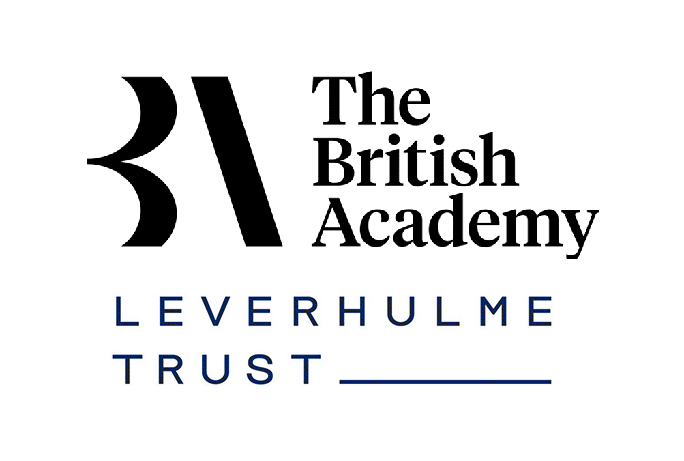
Simon Smith is currently involved in a collaborative research project funded by BA/Leverhulme Grant SRG22\220631:
Has British Civil-Military Leadership Failed? Military Politics and Senior Officer Political Competencies (October 2022 – April 2024)
Leanne Savigar- Shaw
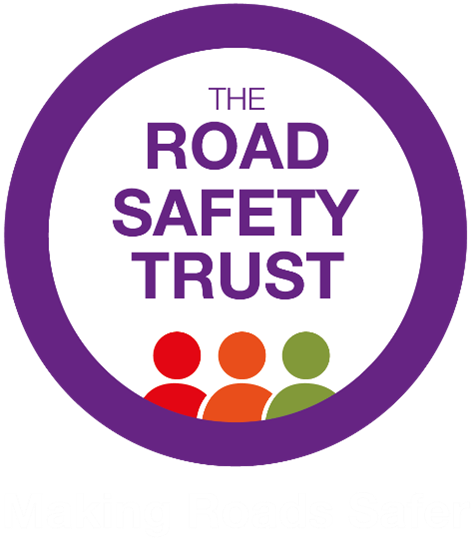
Routes to road Safety: Understanding and measuring the contribution of Community Speedwatch. Funded by the Road Safety Trust
We need to talk about handsfree: Officer understanding of the dangers of handsfree and handheld mobile phone use by drivers, in collaboration with The Open University and Keele University. Funded by the Road Safety Trust

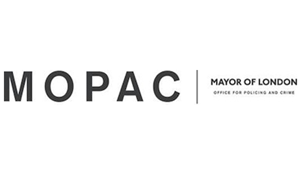
Taser use and its association with social, ethnic and racial disparities in policing (TASERD), in collaboration with Keele University, University College London and Exeter University. Funded by the NPCC and MOPAC
Staffs Lecturer helps tackle Anti-Social Behaviour

Dr Mark Bushell is currently exploring funding opportunities to support a project in the North Staffordshire area that will examine Anti-Social Behaviour and Neighbourhood Crime. The work will adopt a victim-centred approach, gathering qualitative insights into the effects and implications of neighbourhood disorder on residents, business owners and other community members. It is anticipated that findings from the project will provide valuable input to police and community stakeholders’ understanding of victim perceptions of neighbourhood crime.
Recognition and education in violence, abuse and neglect for medical and healthcare practitioners (REVAMP)

Recognition and education in violence, abuse and neglect for medical and healthcare practitioners (REVAMP) is an innovative, trans European project that is free to access.
The project consists of online and engaging training that has been developed for medical, health and social care practitioners to enhance their recognition and understanding of intimate partner violence and abuse (IPVA) / domestic violence and abuse (DVA), thereby improving the health outcomes of those who experience this.
For more information about REVAMP click HERE

Operation Safenet Project with the Home Office and Staffordshire Police: An Investigation into the Impact of Forensic Science on the Criminal Justice System (CJS)
The Centre for Crime, Justice and Security are collaborating on a proof of principle study with the Home Office and Staffordshire Police with support from the Forensic Capability Network and Transforming Forensics. This study is investigating the effectiveness of forensic science on cases that have been investigated by Operation Safenet; a dedicated proactive online child abuse investigation team. Operation Safenet was created in July 2015 and has since been adopted across the region, forming an important part of policing in Staffordshire.
Forensic Science is vital to the investigation of crime and the efficient and effective operation of the Criminal Justice System (CJS). This is particularly true for serious and major crimes including those that are classed as high harm offences such as Child Sexual Exploitation (CSE) cases. Although we anecdotally know the benefits of using forensic science in investigating crimes, we still need to provide a robust evidence base of the impact that utilising forensic approaches have on a case. This measurement of effectiveness should be ongoing, incorporate multiple evidence types and be based on significant number and range of cases. Ultimately, this measurement would allow evidence-based development of operational police policy, directing budget and resourcing decisions and creating a way to measure the impact of the implementation of those decisions; in a world where resources are finite, understanding where forensic science can have the most positive impact is crucial.
To provide this evidence base, in January 2020 the Home Office initiated the Impact of Forensic Science Project to develop metrics to allow the impact of forensic science across the CJS to be measured quantitatively.
Utilising the formal partnership of Staffordshire University and Staffordshire Police, known as the Staffordshire Forensic Partnership, this study will focus on online CSE cases that have been investigated by Operation Safenet to understand the impact of forensic science in these instances. ‘Impact’ is being measured in this study by focusing on a series of ‘Impact Points’, for example, ability to identify victims, safeguarding, informing first witness interviews and early admissions of guilt. This study will assess whether the ‘Impact Point’ approach offers a clear and useful set of metrics on ‘Forensic Value’ and if so will begin to make the case to use the approach manually to inform strategic and operation decision making.
More importantly it will start to make the case for the development of current CJS crime and case management systems to allow real-time access to this type of information and the development of a data and evidence driven model. This would allow the development of operational best practice in forensic science including trend analysis to assess policy pilots and implementation.
To read the final report, please see here
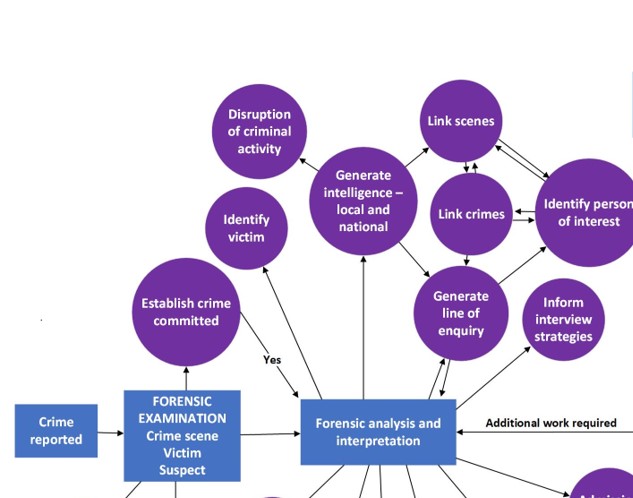
For more information about the project, please contact Staffordshire University principle investigator Prof Claire Gwinnett, c.gwinnett@staffs.ac.uk.
For more information about Operation Safenet, please see http://www.stafford.fm/crimeline/14397-2/
For more information about the Staffordshire Forensic Partnership, please see http://blogs.staffs.ac.uk/staffordshireforensicpartnership/
If you have any concerns about a young person, or wish to report a crime, please call Staffordshire Police on 101, or alternatively call CRIMESTOPPERS on 0800 555 111.
Global Challenges Research Fund (GCRF) Project Investigating Plastic Use in Agricultural Activities
This project aims to address the issues of plastic use in agriculture and its pollution in agricultural soils in both the UK and Turkey. It wishes to provide policy relevant scientific data to support the improvement of plastic waste management, particularly in the agricultural sector. The project is supported by the Global Challenges Research Fund (GCRF) and is in partnership with Cukurova University (Turkey). For more information about the GCRF fund please see here.
Plastic waste management in Turkey is currently acknowledged as insufficient, with landfills remaining open and with limited environmental safety precautions in place. This means that microplastics are free to enter soils and water sources, which have a major impact on the wildlife that live in these ecosystems as well as on human health. Despite this lack of waste management, Turkey has continued to receive plastic waste from third parties, including the UK. This project aims to kickstart further investigations into the true impact that this has had and its potential threat to the environment, focusing initially on rural and agricultural areas.
The first stage of this project is the development and dissemination of a survey to farmers in the UK and Turkey, facilitated by the National Farmers Union (UK) and the Provincial Directorates of Agriculture and Forestry, Unions of Chambers of Agriculture and Karataş Municipality (Turkey). The survey’s aim is to investigate how plastic is used in various farming environments and to understand the scale of which the farms use it. This will help inform of the pathways of plastics entering soils, the air and waterways from agricultural sources. The study will investigate the perceptions of farmers on plastic waste, waste management and plastic alternatives in order to inform policy makers on solutions and areas for future research. The survey responses will also be used to provide meaningful recommendations about plastic use and understand what barriers may be present in waste management, recycling and using plastic alternatives.

Space
Evaluation of SURVIVE Sexual Violence Service Report
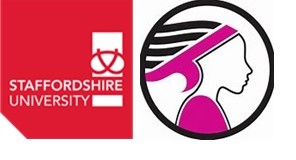
Staffordshire Women’s Aid
Research Lead: Dr Emma Temple-Malt
Research Team: Natalie Campbell & Chantelle Huckfield
Outline
This study was undertaken on behalf of the Staffordshire Women’s Aid organisation who asked the research team to establish whether there continues to be a need for specialist service provision regarding sexual violence, specifically in the county of Staffordshire.
This proposed evaluation:
i) provides an overview of rates of sexual violence nationally and locally (across the county of Staffordshire) – to ascertain whether there is a need for specialist sexual violence support service provision in Staffordshire.
ii) carried out an evaluation of the sexual violence project Survive, which has been running for 9 years. The project has been funded so far, by the Big Lottery, but this funding ends in June 2019. The evaluation will be used to support Staffordshire Women’s Aid funding application for national and local funding from statutory services. Additionally, the evaluation will offer project managers of SURVIVE, an account of the strengths of the service and the extent to which service users’ needs are being met. It will also produce a series of recommendations as to what support staff and service users’ perceive would improve the service.
SURVIVE Sexual Violence Support Service
Survive was launched by Staffordshire Women’s Aid in November 2010. To date, it has been funded by the Big Lottery.
SURVIVE emerged to deal with a rise in referrals for support for victims of sexual violence.
The project supports women and young people who have experienced sexual abuse or violence and offers a variety of services including:
- Intensive one to one practical and emotional support
- Therapeutic group work
- Counselling
- Training and awareness sessions for partner agencies
The service purports to offer a space for service users to discuss their feelings and experience of sexual violence and practical choices available to them (Almond 2013: 6)
The Evaluation of the service in 2013 identified more work was needed in the following areas:
-To support BME victims and LGBT victims. However, practically supporting BME victims might be challenging for the project, this is because Stoke and Staffordshire, predominately tend to have a high proportion of white people (89% and 96% respectively), which may make it tricky for the service to reach out to these victims. Moreover, given that Women’s Aid badge themselves as a ‘women’s only’ service, critical attention needs to be given to how they manage any trans victims of sexual violence that approach the service. Given that the national and local strategies don’t report this information, it is difficult to ascertain how much ‘need’ there would be for these victims.
Space
National Ballistics Intelligence Service (NABIS)
In collaboration with the National Ballistics Intelligence Service (NABIS), Dr Rachel Bolton-King is leading an ongoing research project to evaluate and enhance existing practice in the detection and investigation of UK firearm crime. Understanding the current state-of-play is vital for all criminal justice stakeholders, particularly law enforcement, to develop national approaches that maximise intelligence gathering and the prosecution of criminally used firearms and ammunition.
Phase 1 of the research was completed in September 2020 and identified a series of recommendations to maximise the efficiency and effectiveness of firearm-related evidence recovery processes. A summary of the research can be viewed here and a copy of the report requested through Rachel’s Staffordshire University repository or the Forensic Capability Network’s (FCN) December newsletter.
Phase 2 seeks to identify and understand the type, scale and frequency of all firearm-related education and training provided to and/or by all professionals working in UK police forces and law enforcement agencies. The data will be analysed to establish the consistencies, differences, strengths, weaknesses, and gaps in the formal and informal delivery mechanisms. The research findings will feed directly into NABIS’ External Training Task and Finish Group to inform and further develop the diversity, availability and consistency of firearm-related training provided across UK stakeholders. Such insight and product development aims to further enhance the awareness and understanding of criminally used firearms and ammunition and all associated firearm-related evidence to continually improve the detection and investigation of UK firearm crime.
This project is delivered through the valuable contributions of research assistants Lauren Yare (Phase 1) and Rubin Nsiah (Phase 2), NABIS and all research participants. Our research outputs will be disseminated through a variety of platforms including the Knowledge Hub, FCN and Staffordshire University’s Centre of Crime, Justice and Security. For more information please get in touch.
Space
The use of creases and features of the back of the hand, fingers, and thumbs for human identification.
Professor Claire Gwinnett and Dr Sarah Fieldhouse, Department of Criminology, Policing and Forensic Science, School of Law, Policing and Forensics

Digital information is increasingly presented for consideration as forensic evidence in criminal investigations, where individuals photograph or film themselves during the commission of alleged illegal acts or may be filmed by others. Individuals have been successfully identified and prosecuted following examination of friction ridge detail captured within the image. However, although the images taken on mobile phones are increasing in the quality of resolution, the copies that are retrieved from the various devices are of varying qualities and the friction ridge detail can be out of focus. Often captured in the foreground of the image, or at the correct focal distance for the relevant camera, are other parts of the hands, such as the backs of the hands, thumbs, and fingers, where there is no friction ridge detail. Investigators have questioned what information can be taken from the hands that might support the identification of perpetrators or victims of crime.
Professor Claire Gwinnett and Dr Sarah Fieldhouse are working with Identification Officer, Selina Reidy and Principal Identification Expert, Andrew Rowley of Yorkshire and the Humber Regional Identification Bureau, to investigate the potential for this evidence type within criminal investigations.
Space
Transforming Forensics and Staffordshire University:
Transforming Forensics Digital: Impact of ISO 17025 accreditation work on UK digital forensic units
The proliferation of digital devices, the expansion of digital storage and the pace of change of digital technologies have made digital forensics the fastest growing and fastest changing area of forensic science. This poses challenges for achieving and maintaining ISO 17025 accreditation for all police forces.
Overall Aims and Objectives of Project
This project will contribute to the following outputs as part of the Transforming Forensics aim to establish a national approach and roadmap for the development and management of an integrated, future-proofed digital forensic science capability for policing in England and Wale:
- Develop a model for a National Configuration Authority
- Provide a single point for validation and guidance to technology vendors
- Work with other projects to develop specifications
- Provide ‘one voice’ for Digital Forensics to accreditation and regulatory authorities
Specifically, this research will aim to provide the Digital project with the information necessary to understand how the requirement set by the Forensic Science Regulator for all forces to achieve ISO17025 accreditation for their digital forensic activity has impacted on forces. Both the direct and indirect effects of accreditation activities should be explored.
This will be achieved through the following objectives;
a) To investigate the documented ISO17025 requirements pertaining to Digital Forensics, as stated in the United Kingdom Accreditation Service (UKAS) guidance documentation and the Forensic Science Regulator’s Codes of Conduct and Practice.
b) Identify any appropriate published literature that reports on the ‘lessons learned’ for
accreditation and create a literature review in the Current Knowledge and Perceptions of ISO17025 for Digital Forensics.
c) To design and implement a Qualtrix survey that will investigate pre, during and post
activities required for forces to achieve and ultimately maintain ISO17025 accreditation for digital forensic activities. This will include;
i. Investigation into the prerequisites for applying for accreditation, activities required
to put these in place within DFUs and the wider force organisation and any external
activity that was required (e.g. specialist support).
ii. Identify the ongoing commitment for police DFUs to maintain accreditation, including the scope of ongoing work to maintain method validation and other quality assurance activities required.
d) Identify a sub-group of DFUs to conduct interviews with to increase understanding of areas of interest identified in b (ii).
e) Data mining of secondary sources of information such as transcripts from the House of Lords Science and Technology Select Committee 2018 session which included an investigation into the way in which different private providers view the current system of accreditation.
f) Create a set of recommendations (‘lessons learned’) for the purposes of ongoing
accreditation work for DFUs.
Space
Detecting body fluids using Light Emitting Diode technology
Professor John Cassella and Dr Sarah Fieldhouse, Department of Criminology, Policing and Forensic Science, School of Law, Policing and Forensics, Staffordshire University
Associate Professor Marg Bannerman, School of Health and Social Care, Staffordshire University
Dr Kayleigh Sheppard, Pharmacy and Biomolecular Sciences, Liverpool John Moores University
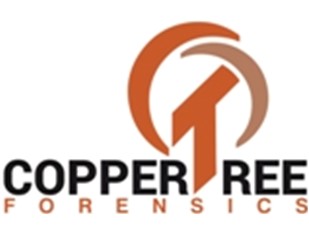
The use of specialist lighting to detect and presumptively identify forensic trace materials, including body fluids is well established. The use of LED technology, power output and the narrower wavelength spread of the UV spectrum has presented opportunities to improve the sensitivity and specificity of light sources, which reduce the health and safety concerns and transportation considerations of laser systems.
Professor John Cassella and Dr Sarah Fieldhouse from Staffordshire University in collaboration with Dr Kayleigh Sheppard from Liverpool John Moore’s University have conducted research to investigate the efficacy of light sources for body fluid detection, which has led to several peer reviewed publications. Their research has also combined the use of lighting systems with 360° photogrammetric technology for crime scene documentation for the retrospective identification of forensically relevant materials.
The team has collaborated with CopperTree Forensics Ltd. to investigate the efficacy of LED light sources for body fluid detection. Not only has the research demonstrated the effectiveness of LED technology for body fluid detection, but it has also contributed to changes to their ergonomic design. These FIT-LED light sources have influenced best practise guidance in a clinical environment, through Mountain Healthcare, a major provider of Sexual Assault Referral Centres (SARCs) in the UK and which is underpinned by the anti-contamination guidance of the UK Forensic Science Regulator (FSR-G-207, FSR-G-208).
More recently, the SARCS-LED and FIT light sources have been developed for the healthcare sector as a targeted cleaning light source for infection control, known as the CiFi Torch. The light source was submitted to the Meridian Innovation Challenge 2020, which is a process for identifying new innovation for healthcare and NHS England. It has since been nominated for an Innovation Award in Healthcare – Medi Link.
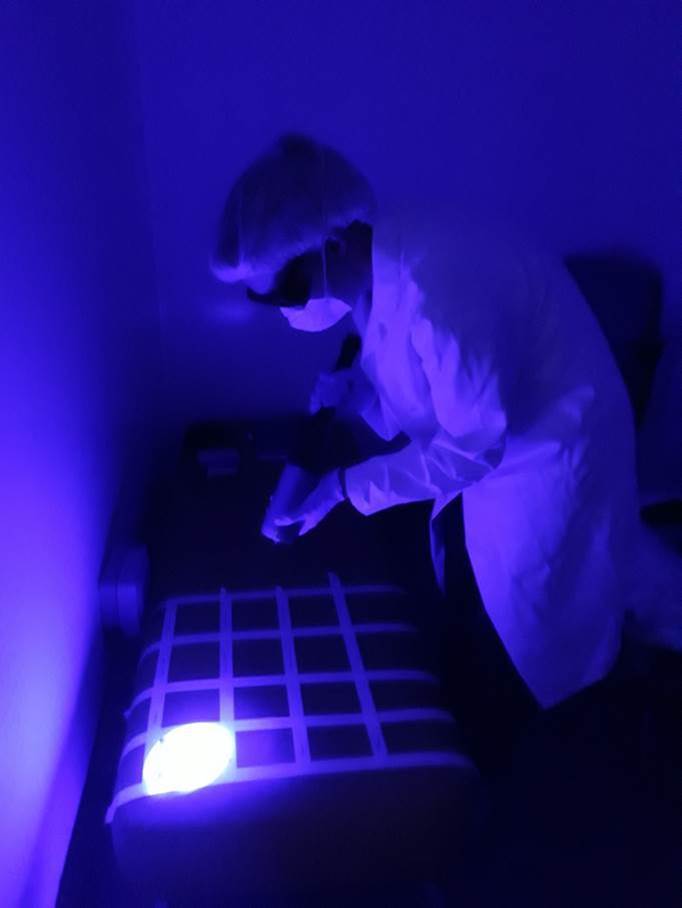
Space
Policy Press | Researching the COVID-19 Pandemic: A Critical Blueprint for the Social Sciences : By Daniel Briggs, Anthony Ellis, Anthony Lloyd and Luke Telford
Space
AgroPlast: Investigation into Plastic Use in the Agricultural Sector
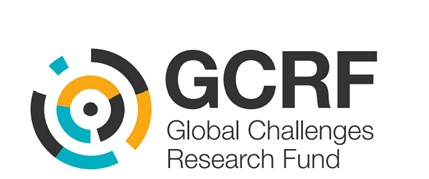
Plastic use in agriculture is abundant, from plastic greenhouses to irrigation piping. Over time these plastics break down into microplastics (<5mm in size) and enter our terrestrial systems which can affect crops, and transport to waterways, further polluting our environment. The lack of knowledge on the main source of MPs in the agricultural environment is currently hampering the establishment of effective regulatory actions for safeguarding Turkish and European public health and wellbeing in synergy with food safety and ecosystem integrity. Both national and international scientific organisations have emphasized the need for data on the source of microplastics in the agricultural area to provide an evidence base that effectively supports policy-making. Governments are under public pressure to regulate, mitigate and reduce sources of terrestrial MP pollution at the same time industry cautions that excessive regulation would harm European/Turkish prosperity. Policy makers facing this challenge currently lack the scientific evidence needed to inform decision-making. This includes a lack of knowledge of the extent of primary plastic use in this sector. In addition, the challenges faced by farmers by the life cycle of agricultural plastics are not fully understood. To recommend and implement sustainable and appropriate activities to reduce plastic use in the agricultural sector, we must understand the perceptions of farmers to this as a pollutant and the barriers and challenges they face in making alternative choices. The aim of this study therefore is to grow a collaborative research agenda that aims to understand the current status of plastic use in agricultural areas in Turkey and the UK.

